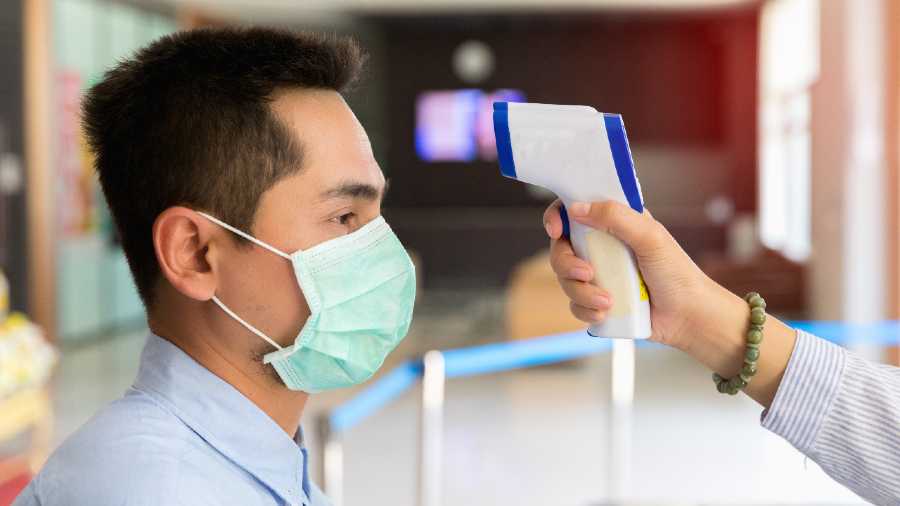Steady and simultaneous increases in daily new Covid-19 cases in 13 states across India over the past four weeks mark early signs of the third wave, health experts said on Thursday.
“There should be no doubt. We’re now seeing the unmistakable signs of a nationwide wave, even though new cases in some states are relatively small,” said Oommen John, a physician and research fellow at The George Institute for Global Health, New Delhi.
Alongside the rising omicron infections, the nationwide daily new cases over 24 hours have breached 10,000 for the first time in over four weeks, fuelled by growing infection rates in some of India’s most populated states — Bengal, Maharashtra, Uttar Pradesh and Bihar.
Bengal on Thursday reported 2,128 new infections, the first time the state has logged 2,000-plus cases over a 24-hour period since June 20, or 193 days ago. Calcutta alone registered 1,090 cases, or over 51 per cent of the state’s total. Just a week ago, Bengal had reported 550 daily cases and Calcutta, 217.
Among the other states with rising infections are Haryana, Jharkhand, Madhya Pradesh, Punjab, Rajasthan and Uttarakhand.
The Union health ministry on Thursday flagged rising test positivity rates — which imply either growing epidemics or poor testing levels — in Bengal, Delhi, Gujarat, Karnataka and Maharashtra. The test positivity rate in Bengal has risen from 1.49 per cent to 5.47 per cent in a week.
The country’s count of omicron infections rose on Thursday to 961 in 22 states, the highest numbers in Delhi (263), Maharashtra (252), Gujarat (97), Rajasthan (69) and Kerala (65). But public health experts and doctors suspect the actual count is likely to be much larger and remains hidden because of limitations in timely contact tracing, testing and sequencing.
“Whatever we’re witnessing is part of a global Covid-19 upsurge related to omicron,” said Vinod Paul, chair of the national Covid-19 task force and member (health) at Niti Aayog, the government’s apex think tank.
Paul said the nationwide R, or reproductive number — a measure of the epidemic’s growth — was currently estimated at 1.22, implying that 100 infected people were giving rise to 122 new patients.
But, he said, Covid-19 deaths in the country appear stable — an average of 300 over the past seven days.
“There is no need to panic. We’re prepared and we’re experienced. There is a need to remain alert and cautious, and be disciplined,” Paul said, alluding to the Covid-appropriate precautions expected from the public and the public health measures expected from district authorities across India.
Although the Union health ministry has directed the states to impose lockdown-like restrictions in any district where the test positivity rate rises beyond 10 per cent or where hospital oxygen bed occupancy exceeds 40 per cent, some experts are worried about the timeliness and efficiency of such restrictions.
Experts also said that some of the restrictions being recommended and adopted appeared arbitrary, without any real evidence of benefits. The George Institute’s John said: “Why wait for positivity to rise to 10 per cent, why not 5 per cent? And how useful are night curfews? Where is the evidence they help?”
John and others said significant efforts were being directed at airport screening at a time the country should have been training district authorities to start timely public health measures through clear-cut algorithms to contain local surges.
The health ministry had last week said the country had earmarked 494,000 oxygen-supported beds, 139,000 intensive care unit (ICU) beds and nearly 90,000 paediatric beds to manage Covid-19.
Although omicron infections have so far appeared to have been less lethal, public health experts and doctors in India say the pressure on hospitals will depend on both the number of infections and the proportion that develops severe disease.
“There is not enough data on how omicron will impact our healthcare services yet,” said a critical care medicine specialist in Mumbai.












